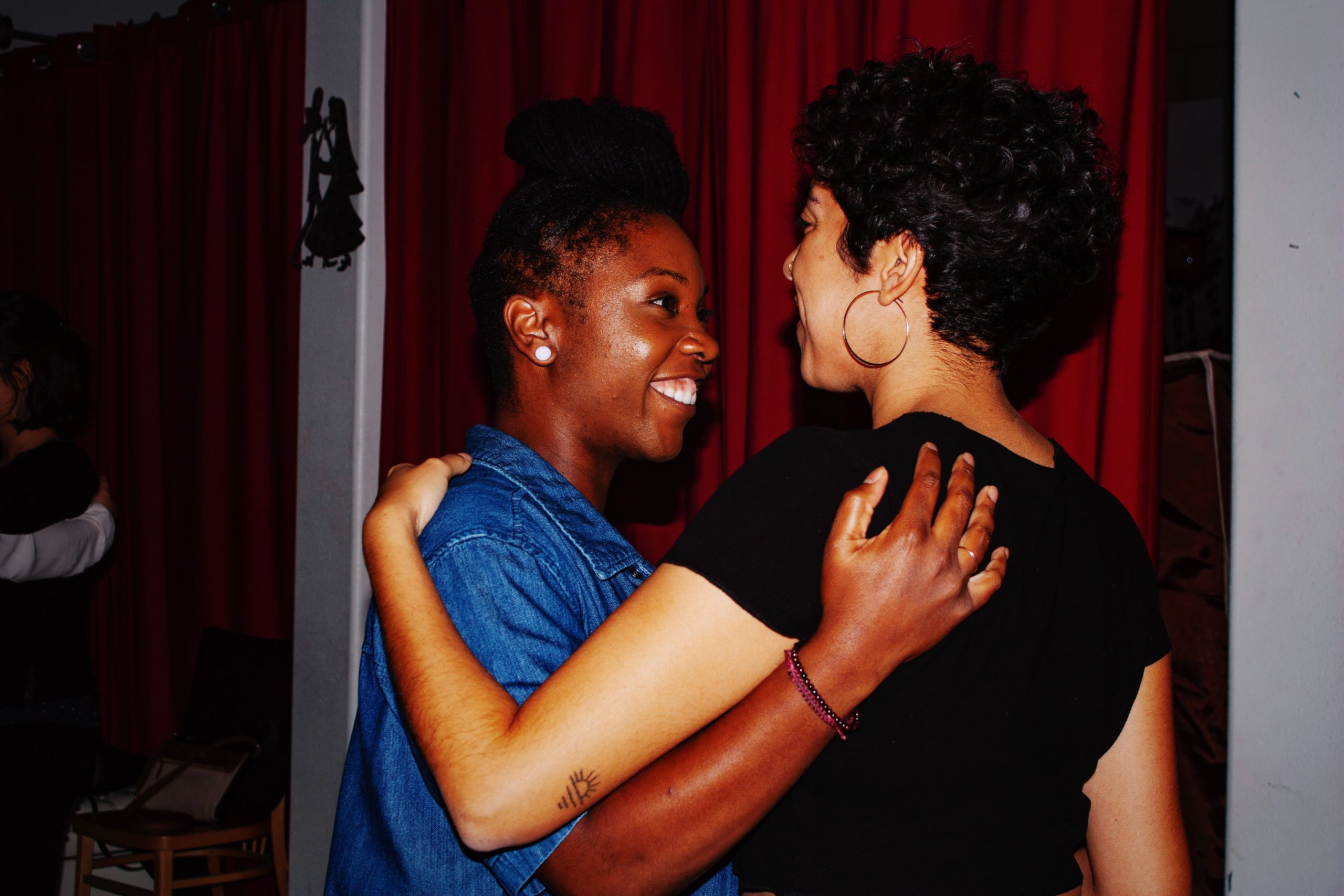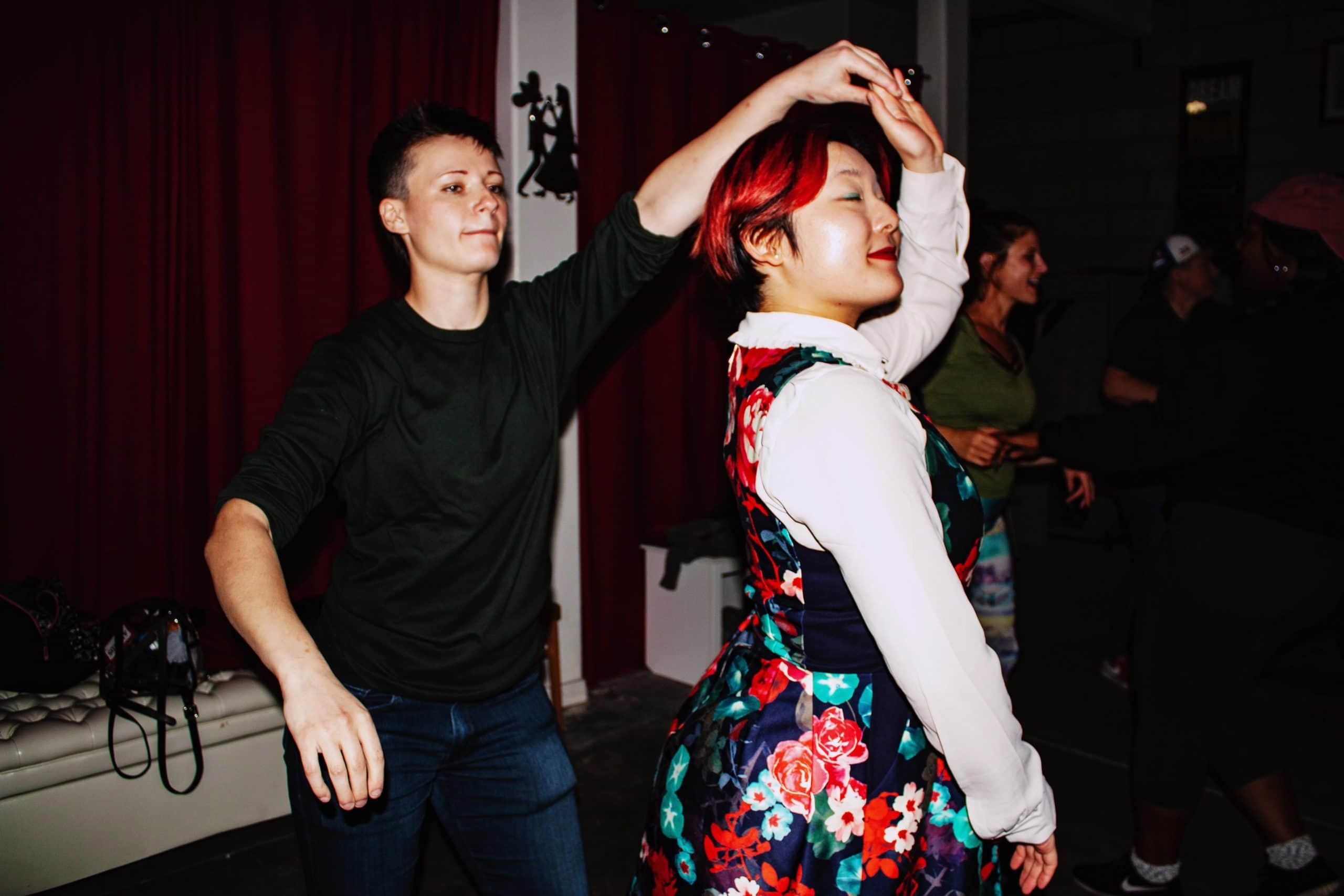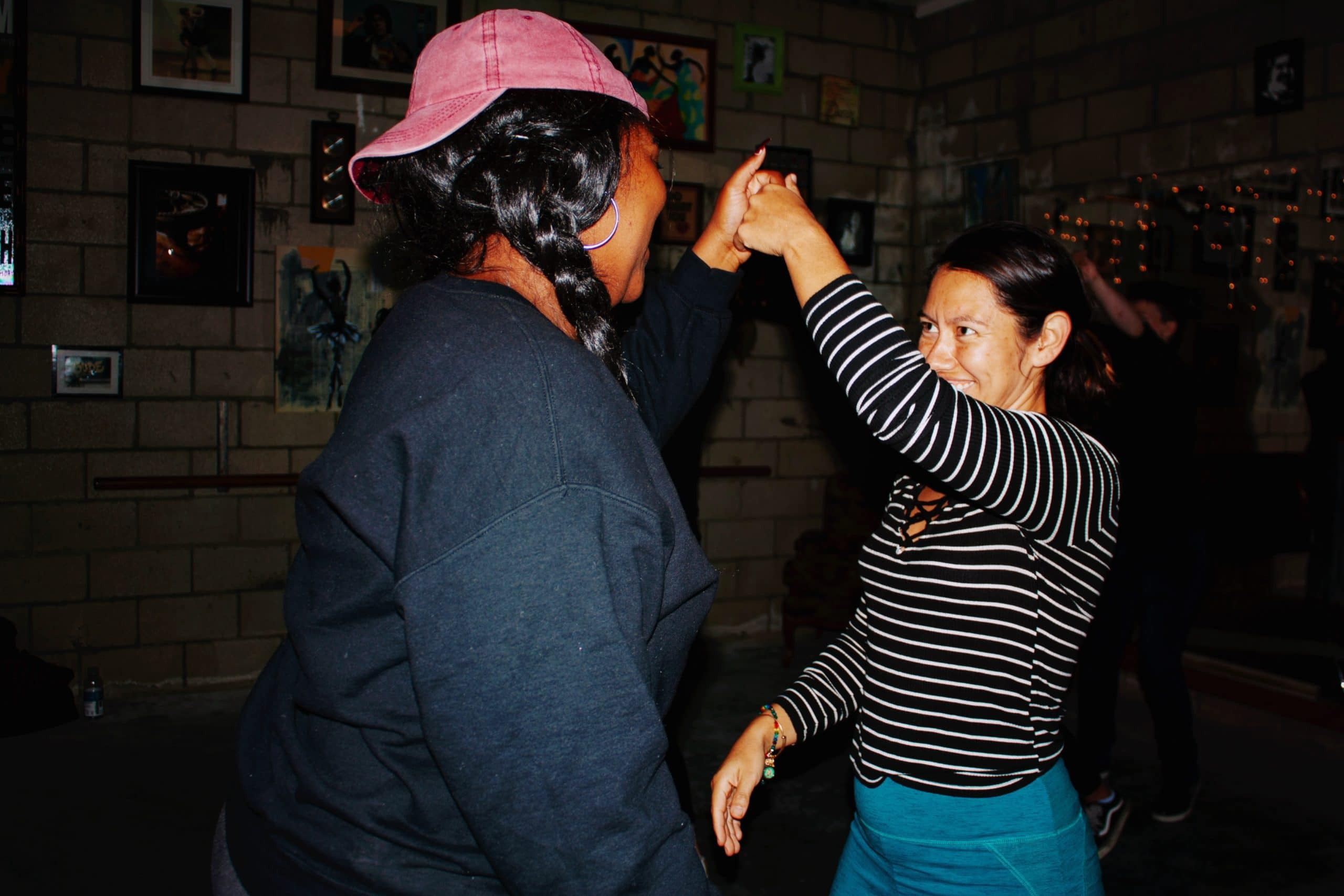Two months ago, a visit to a queer Latina friend in San Francisco unexpectedly ignited a passion for Latin dance. Until that night, after eleven years of friendship, her impressive dance skills, particularly her lead, remained a delightful secret. The sheer joy of dancing together sparked an immediate fascination with Latin rhythms. However, the initial foray into the dance scene at a straight club brought the unwelcome experience of sexual harassment from a male dance partner.
While the situation was addressed and the harasser removed, a sense of discomfort lingered. Seeking a more secure and liberating environment, we transitioned to a gay bar, where the atmosphere was palpably different – safe, liberated, and free.
Upon returning to Los Angeles, the desire to merge these newfound loves – Latin dance and a secure, queer community – became paramount. Initial searches for “queer Latin dance nights” in Los Angeles clubs and LGBTQ+ venues yielded disappointing results. Serendipitously, an Instagram repost from @queertrans_events led to Queer Latin Dance LA’s flyer advertising salsa and bachata classes in Highland Park. This discovery marked the beginning of an enriching journey into the world of inclusive Latin dance.
 Queer Latin Dance LA flyer advertising Salsa and Bachata classes for the LGBTQ+ community in Highland Park. Learn Latin dance in a safe and inclusive environment.
Queer Latin Dance LA flyer advertising Salsa and Bachata classes for the LGBTQ+ community in Highland Park. Learn Latin dance in a safe and inclusive environment.
“I want people to feel that when they come to the studio or to my class that they’re coming to my house. And they do, right?” Arlene Santos, instructor and co-founder of Queer Latin Dance LA, shared with a laugh, emphasizing the welcoming nature of the classes held in her garage.
Queer Latin Dance LA offers weekly salsa and bachata classes every Tuesday from 7:30 PM to 9 PM, monthly dance socials on the first Saturday, and a dance team. To date, they are recognized as the only dedicated queer Latin dance community in Los Angeles. Established and taught by Arlene Santos and Karin Gut, their mission is to make Latin dance accessible and enjoyable for queer individuals, providing a safe, equitable, and communal space. Despite identifying as straight, Santos enthusiastically embraced the idea of leading classes for Gut’s LGBTQ+ meetups about four years ago. Their collaboration began when Gut’s then-girlfriend, seeking partner dance lessons, enrolled in Santos’s class at Lumina Dance Academy in Pasadena. Starting as a beginner with admitted “two left feet and three left hands,” Gut rapidly progressed to co-teaching alongside Santos, specifically catering to the queer community.
“There are also men who think, ‘Well I’m a macho man, I’m the leader of this dance,’ and ‘a woman? What are you trying to do here? Be a man? I’ll show you how to lead.’”
Karin Gut, the other instructor and co-founder, highlights the core value of their initiative: “It’s important to me because I want to create a safe, welcoming space for everybody in the LGBTQ community to come learn how to dance, be comfortable, be themselves, not being looked at funny.” This commitment to safety and inclusivity distinguishes Queer Latin Dance LA as a haven for LGBTQ+ individuals seeking to explore Latin dance.
Overcoming Two Left Feet in Latin Dance Classes
Gut’s personal history with dance before meeting Santos was marked by discomfort. Whether at lesbian or straight bars, attempts to dance were often met with misinterpretations or rejection. In straight venues, many women displayed unease dancing with another woman, leading Gut to adopt a head-down approach when asking for a dance, simply to “get this over with” and avoid unwanted attention.
 Karin Gut and Arlene Santos teaching Latin dance steps in their inclusive class, fostering a comfortable learning environment for LGBTQ+ individuals.
Karin Gut and Arlene Santos teaching Latin dance steps in their inclusive class, fostering a comfortable learning environment for LGBTQ+ individuals.
“There are also men who think, ‘Well I’m a macho man, I’m the leader of this dance,’ and ‘a woman? What are you trying to do here? Be a man? I’ll show you how to lead.’”
This challenging environment spurred Gut to realize that creating a safe dance space necessitated personal initiative. Approximately five years ago, Gut and Santos initiated their first LGBTQ+ dance classes at the Oxwood Inn, a lesbian bar in Van Nuys, which has since closed. Following the closure, they adapted to various locations, eventually settling in Santos’s garage as a temporary solution. Queer Latin Dance LA, officially named about a year and a half prior to this article, currently features Santos teaching salsa, followed by a break, and then Gut leading bachata lessons.
“For my first class, I was nervous to go to someone’s house I didn’t know, so I brought a friend. Almost the entire class, we laughed at how terrible we were at dancing, but unlike in ballet classes, laughing wasn’t received with scolds or glares, it was welcomed.”
The initial apprehension about attending a class at a stranger’s home was quickly dispelled by the welcoming atmosphere. Bringing a friend for support, the experience transformed into one of shared laughter at their beginner dance attempts. This contrasted sharply with experiences in more rigid dance forms.
 Students laughing and enjoying a beginner Latin dance class at Queer Latin Dance LA, highlighting the relaxed and joyful atmosphere of the lessons.
Students laughing and enjoying a beginner Latin dance class at Queer Latin Dance LA, highlighting the relaxed and joyful atmosphere of the lessons.
Having trained in ballet for 14 years, including participation in a dance company, the structured and often authoritarian environment of ballet classes was a stark contrast. Ballet instructors were often strict, stern, and prone to causing tears. Corrective measures like using a ruler to check posture or physically forcing turnout were common.
Ballet, unlike Latin dance, has limited partner work outside of productions, and even then, it’s typically gender-defined. Ballet’s emphasis on rigid lines and perfect body shapes contrasts with the hip movements, body rolls, and ribcage circles integral to Latin dance. The prescribed attire of tights, leotard, and a tight bun in ballet offers no space for personal expression in gender presentation and can feel uncomfortably exposed. The high-stress, high-pressure environment of ballet is worlds apart from the supportive atmosphere of Queer Latin Dance LA classes.
“When you’re dealing with something that has ingrained gender roles, you need a space that is open and accepting and playful in order to figure out how those gender roles can be rearranged and reclaimed…”
The positive initial class experience led to continued attendance, including participation in their dance socials. During socials, dance partners change every song, promoting interaction with numerous individuals of varying skill levels, from beginners to experienced dancers. Students consistently praise the accessibility for the queer community, the welcoming environment for beginners, and the overall sense of safety in this dance space.
Zenzele Price highlights the importance of the environment: “When you’re dealing with something that has ingrained gender roles, you need a space that is open and accepting and playful in order to figure out how those gender roles can be rearranged and reclaimed…” This underscores the significance of Queer Latin Dance LA in challenging and redefining traditional dance norms.
 Diverse group of students practicing Latin dance steps together at Queer Latin Dance LA, emphasizing inclusivity and community building.
Diverse group of students practicing Latin dance steps together at Queer Latin Dance LA, emphasizing inclusivity and community building.
Santos explains how she adapts her teaching methodology: “As society is adapting, things like that are becoming more and more normalized. Queer people need to learn how to dance together too!” She has shifted from traditional gender-segregated teaching methods (ladies to one side, gentlemen to the other) to a more inclusive approach of “leads on one side, and follows on the other” in all her classes, queer or not. Price adds, “Queer people need to learn how to dance together too!” emphasizing the need for such inclusive spaces.
Reclaiming and Rearranging Gender Roles in Latin Dance
The necessity for inclusive spaces in Latin dance is clear. Entering any dance class as a novice can be daunting, but Queer Latin Dance LA actively mitigates this initial fear. Several students recounted their initial anxieties, emphasizing how quickly those feelings dissipated upon experiencing the class. Bailey Albinger noted her pleasant surprise: “It was very open and slow-moving.”
Gina Cho echoed this sentiment: “I feel comfortable because it’s for people of all… they can be beginners, they can have no experience dancing, and there’s no judgment if we have trouble picking up a step, and everyone is really nice and friendly.” This supportive and non-judgmental atmosphere is a cornerstone of Queer Latin Dance LA’s appeal.
“A lead and a follow should be something where you’re equal. That’s why I like being in this space because I feel like I’m equal with whoever I’m dancing with, and standing outside of that patriarchy and domination.”
While not all straight Latin dance clubs are inherently negative, many are unfortunately breeding grounds for toxic behaviors, including sexual harassment, violence, and unwelcoming environments for LGBTQ+ individuals. Personal experiences and broader societal issues highlight the vulnerabilities faced by women and LGBTQ+ individuals in these settings. The Orlando shooting at Pulse nightclub during a Latin night serves as a tragic reminder of the dangers. Students at Queer Latin Dance LA have shared experiences of feeling “less agency,” as Price described, facing sexual harassment, as mentioned by Cho, and a constant state of alert, a sentiment shared by both Michelle Rodriguez and Hannah Woods.
 Two women dancing closely together in a Latin dance class, demonstrating the concept of equal partnership and challenging traditional gender roles in dance.
Two women dancing closely together in a Latin dance class, demonstrating the concept of equal partnership and challenging traditional gender roles in dance.
“A lead and a follow should be something where you’re equal. That’s why I like being in this space because I feel like I’m equal with whoever I’m dancing with, and standing outside of that patriarchy and domination,” Rodriguez articulated, highlighting the sense of equality fostered in the classes.
Gut further explains that LGBTQ+ individuals often face exclusion at straight clubs, such as not being asked to dance or experiencing rejection. Santos recounts instances where dancing with Gut led to being ostracized for the rest of the evening at straight dance venues.
Queer Latin Dance Festivals: A World Apart
“Everybody should be able to learn to dance and feel comfortable,” Santos firmly believes. This philosophy underpins the inclusive ethos of Queer Latin Dance LA.
Contrary to initial assumptions, a majority of Queer Latin Dance LA’s students do not identify as Latinx (based on the problematic U.S. census definition of “Latino”). The expectation might be that Latinx individuals would be more drawn to such spaces to connect with their cultural identity in a safe and affirming environment. However, for Latinx students like Rodriguez, the classes offer a vital link to their heritage, providing an opportunity to dance and connect with Latin culture in a way that may not be possible in family or mainstream settings. Santos envisions the Queer Latin Dance LA team performing at the World Salsa Fest, aiming to raise visibility and awareness for the Latin queer dance community and affirm their essential place within the broader dance world.
Their dance team has already graced stages at Outfest, a Latino fashion show, LA Pride, the Calavera event at Mi Centro, and the Queer Latin Dance Festival in Oakland – recognized as the only festival of its kind. The Queer Latin Dance Festival underscores the widespread need for LGBTQ+ Latin dance spaces and demonstrates that Queer Latin Dance LA is part of a larger, vital movement. This annual two-day festival attracts queer dance troupes from across the US, Mexico, Canada, and beyond, offering workshops, classes, socials, and performances, creating a vibrant hub for the queer Latin dance community.
“That’s the most fun one I’ve ever been to and I’ve been going to festivals for 20 years,” Santos enthusiastically shared, comparing it to her extensive experience in straight dance festivals.
According to Santos and Gut, the Queer Latin Dance Festival distinguishes itself from straight festivals through the absence of toxic competitiveness and the strong presence of community building and acceptance. The prevailing sentiment is that everyone is worthy of dance, fostering an environment of inclusivity and mutual respect. This same philosophy of acceptance and community is intentionally cultivated within Queer Latin Dance LA classes, making it a unique and invaluable space for LGBTQ+ individuals seeking to explore Latin dance.
Whether you are naturally outgoing or more reserved, a seasoned dancer or a complete beginner, Queer Latin Dance LA offers a space for liberation, safety, and genuine community within the LGBTQ+ spectrum. It’s more than just Latin Dance Classes; it’s a welcoming home on the dance floor.
